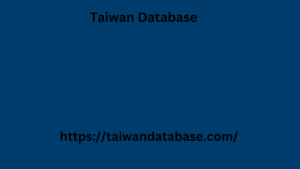Crafting a compelling email goes beyond just the body content. A well-written closing leaves a lasting impression and encourages the recipient to take action. This guide dives deep into the art of the email sign-off, exploring various closing options, best practices, and considerations for different scenarios.
Understanding the Importance of a Strong Email Closing
Imagine writing a captivating email, outlining your ideas flawlessly, only to stumble at the finish line with a generic “Best” or an abrupt “Thanks.” A strong closing acts as the punctuation mark in your email symphony, reinforcing your message and prompting the desired response.
Here’s why a powerful email sign-off matters:
Professionalism A polished closing reflects
Well on you and your brand. It conveys attention to detail and strengthens your credibility.
Clarity: A clear closing leaves no room for misinterpretation. It specifies the action you expect from the recipient, whether it’s a reply, a meeting request, or further discussion.
Engagement: The right closing can spark a call to action or open the door for continued conversation.
Memorability: A unique and impactful closing leaves a lasting impression, making your message stand out from the overflowing inbox.
Choosing the Right Sign-Off: A Guide to Popular Closings
The ideal email closing depends on the context, your relationship with the recipient, and the overall tone of your message. Let’s explore some popular closing options:
Formal Closings:
Sincerely: A classic and universally appropriate choice for formal emails.
Regards: Another safe option for formal correspondence.
Best regards: Slightly more formal than “Regards.”
Respectfully: Used when addressing someone of higher authority.
Semi-Formal Closings
Best: A versatile closing for most business emails.
All the best: Slightly more informal than “Best.”
Thanks, followed by your name: Concise Taiwan Database and professional but friendlier than “Sincerely.”
Thank you, followed by your name: More formal than simply “Thanks.”
Informal Closings:
Thanks! Casual and appropriate for colleagues or frequent collaborators.
Talk soon! Expresses eagerness for further communication.
Cheers, followed by your name: Friendly and lighthearted.
Remember: When in doubt, err on the side of formality.
Beyond the Basics: Crafting Compelling Call-to-Actions
A powerful closing isn’t just about expressing gratitude. It’s your opportunity to nudge the recipient towards your desired outcome. Here’s how to integrate a call to action (CTA) into your email sign-off:
- State your request clearly: Be specific about what you want the recipient to do next.
- Keep it concise: A clear and concise CTA is more likely to be followed.
- Use action verbs: Words like “reply,” “schedule,” or “call” encourage action.
- Example: “Best regards, John. Would you be available for a quick call next week to discuss this further?”
Tailoring Your Closing: Considerations for Different Scenarios
The best email closing adapts AI Tools for Trend Analysis and Forecasting to the situation. Here are some tips for tailoring your sign-off:
For follow-up emails: Briefly reference the previous email and reiterate your request. (e.g., “Following up on my previous email regarding…”)
For cold emails: Express interest in a future conversation and invite further contact. (e.g., “I’d be happy to discuss this further. Please feel free to connect on LinkedIn.”)
For congratulatory emails: Offer specific well wishes and best wishes for continued success. (e.g., “Wishing you all the best in your new role!”)
For thank you emails: Express sincere gratitude and highlight the value you received. (e.g., “Thank you again for your time and insights. I truly appreciate it.”)
Creating a Unique Signature: Leaving a Lasting Impression
Your closing doesn’t end with the sign-off. A well-crafted email signature provides additional information about you and your brand. Here’s what to include:
Your full name: Essential for building trust and professionalism.
Your title: Provides context about your role.
Company name: Increases brand recognition.Contact information: Makes it easier for the recipient to reach you optional: phone number, website. Social media links: Encourages further connection optional.
